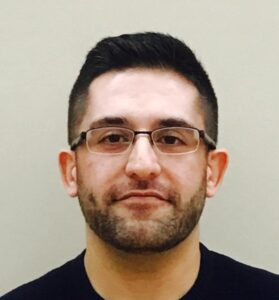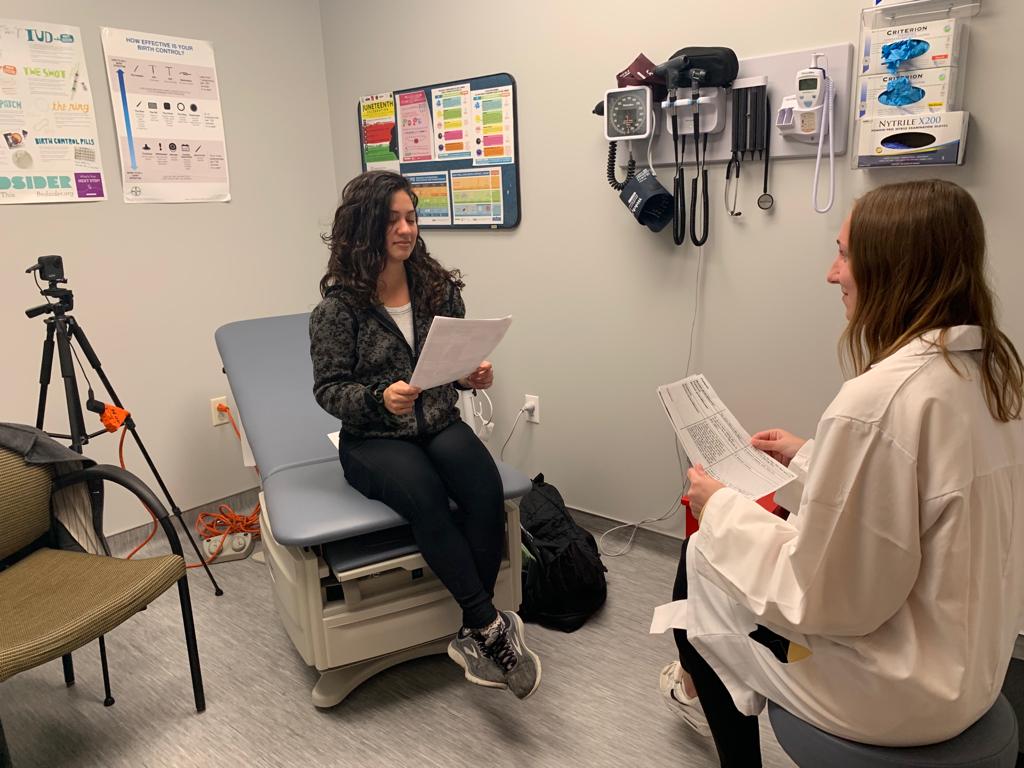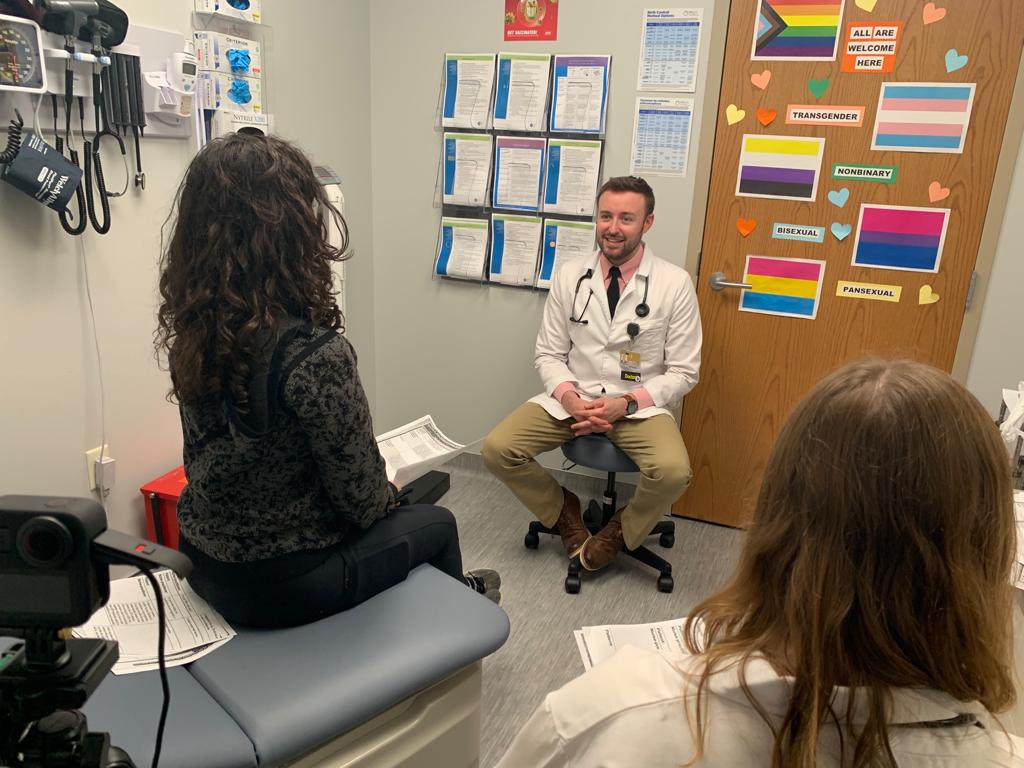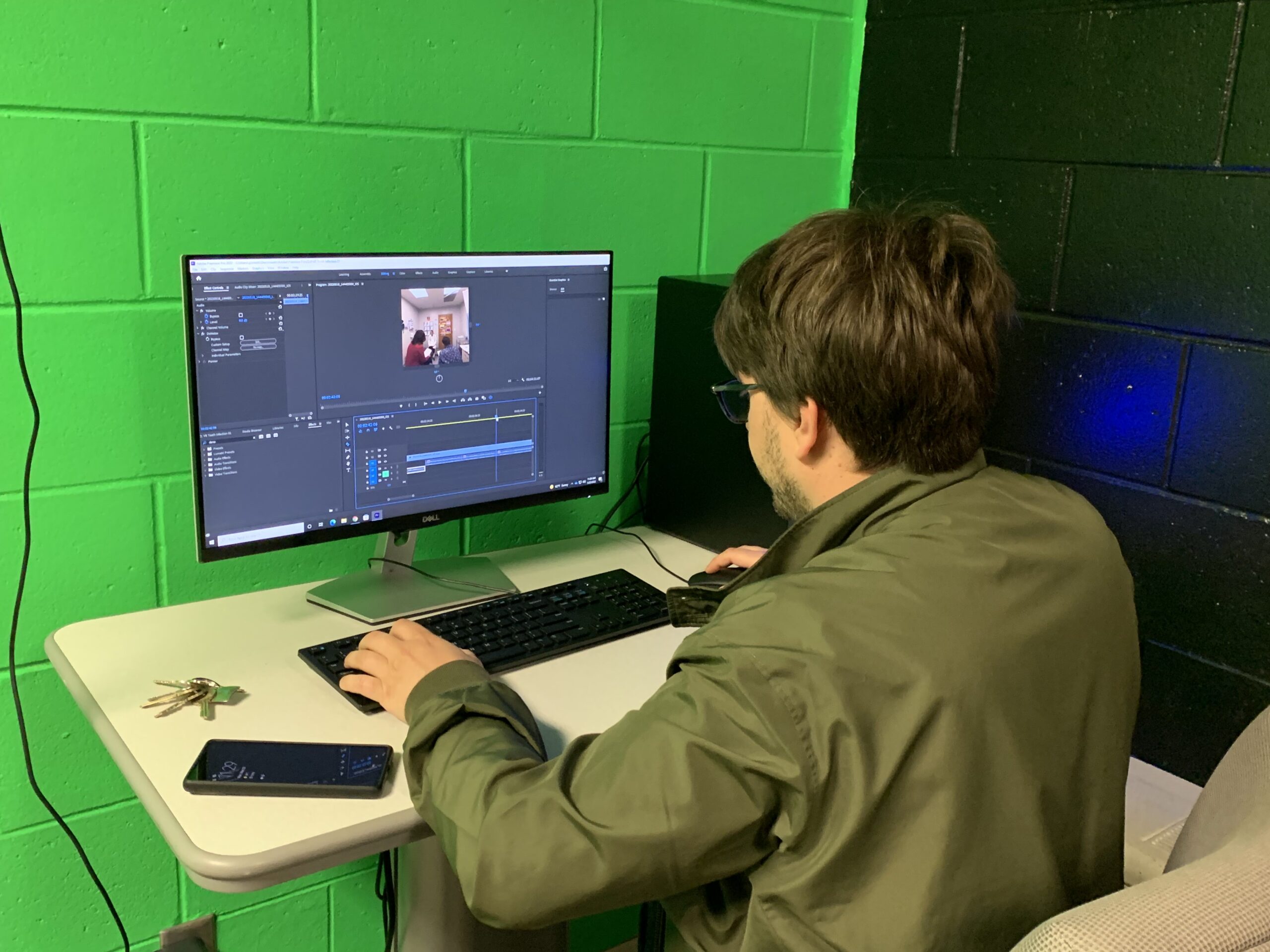Virtual Reality Training for Language Medical Interpreting
By Giovanni Zimotti and Alexis Jiménez, University of Iowa


DOI: https://www.doi.org/10.69732/RMVH1759
Real life experience is considered by many the best way to learn and put in practice theoretical knowledge. Sometimes, due to a lack of opportunities, students experience the transition from theoretical knowledge to real life experience without receiving any formal training. In the field of Medical Spanish-English Interpretation there are risks, obstacles, and costs that can interfere with gaining real life experience. The usual structure of an interpretation course includes theoretical knowledge, role-playing among students, and, when possible, volunteering at health facilities to get real life practical experience. This article presents the use of Virtual Reality (VR) scenarios as tools to practice and assess interpreting in a simulated environment. This virtual training can be used to reinforce practice before volunteering at health facilities or to substitute for it when these types of opportunities are not available for students.
The COVID-19 pandemic has greatly reduced opportunities for language students to practice what they learn in the classroom in real-life settings, and actively engage with speakers of the target language in their communities. In our case, teaching a Spanish Medical Interpretation course presented some challenges regarding the practice in the community component because we did not feel comfortable sending our students to volunteer at the clinics in the middle of a pandemic. This led us to explore new avenues to provide our students with the most realistic experience possible regarding their training without putting them at risk.
Teaching Language Medical Interpreting in Higher Education
Introduction to Spanish-English Interpretation is a class offered at the University of Iowa. It is designed for advanced Spanish students and heritage speakers taking Spanish courses focused on health. This class offers students the opportunity to learn about Spanish-English medical interpretation serving Limited English Proficiency (LEP) patients. Although this is an introductory course and students will not be professional interpreters after taking it, they will certainly have gained clear knowledge about the requirements and basic protocols of a medical encounter requiring language interpretation. Furthermore, our students can help provide the best bilingual interpretation and health service possible in the absence of certified professional interpreters at the health facilities where they work. In addition, our students are prepared to know how to work efficiently with a certified professional interpreter if they are available.
Along with the content previously mentioned, the class also provides a historical overview of the field of language interpretation, and its group of specialized fields such as medical interpretation itself. Furthermore, students gain an understanding about the importance of medical Spanish-English interpretation, as an essential field promoting social justice and equity in our society for LEP patients in the United States. Since the 1990s, due to concerns about patient safety, medical interpretation was formally established as a right by the enactment of language access laws and advocacy. Added to this, there were negative ramifications for immediate family members or friends of LEP patients interpreting for them. Children were the most affected psychologically, because they had to interpret for their family members, conveying very serious information such as diagnoses related to terminal diseases or sexually-transmitted diseases, a task that is better left to people who are not connected to the patients, because of the emotionally-charged content of the information (Bancroft & Dallmann, 2016).
Medical interpreting is an area of the profession called Community Interpreting (Bancroft & Dallmann, 2016). The existence of Community Interpreting responds to the need to provide interpretation services to those who do not have command of a specific target language. Thus, the services of an interpreter are necessary in multiple settings such as schools, hospitals, courts, community centers, etc. LEP members of society may belong to a different socioeconomic status and have varied levels of education. Still, the common factor among them is their need for interpreters to navigate the legal, educational, and medical sectors of society. Usually, LEP patients are first-generation immigrants to the United States and even though they might have some command of English, many times they are not able to communicate comfortably, so having an interpreter facilitating communicative autonomy is essential. At the same, the use of interpreters guarantees the compliance of legal requirements by medical and legal establishments that could face lawsuits if wrongdoings were committed due to the lack of interpreters.
Due to this need, many community colleges and universities have incorporated classes involving Spanish for Medical Interpretation. Some courses are part of the last stages of their Spanish minors and majors, while others form a comprehensive program. In addition, other private institutions have developed certification programs, usually made up of 40-44 hours of coursework solely devoted to Spanish for Medical Interpretation. These types of certification programs can only be taken by bilingual or multilingual individuals with a high level of proficiency in the target language. These certification programs do not focus on learning languages, but teach the protocols, standards, ethical principles and procedures of medical interpretation. Additionally, these programs cover the theory and vocabulary related to the medical field.
A language medical interpretation course is usually organized with two main components. A theoretical one, that includes the teaching of foundational and cultural elements of interpreting, combined with specific learning vocabulary techniques (e.g., chunking and imagery to enhance memory, glossaries to expand vocabulary, symbols and abbreviations development for note-taking). The second component is related to the practical aspect of this profession. The experiential learning part involves students training through standard roleplay activities in the classroom, combined, when possible, with practical training by volunteering at healthcare facilities. By doing so, students gain valuable hands-on practical experience with interpreting. While it is a great opportunity for students, it also poses some legal risks and difficulties for the health professionals and LEP patients. Students might not be fully ready to interpret, or might experience stage fright, stress, or nervousness that could hinder the medical encounter.
Typically speaking, the medical encounter involving the services of an interpreter would be divided in three parts: pre-encounter, encounter, and post-encounter. Besides these three stages, an interpreter should follow specific protocols to facilitate the communication between the health provider and the patient, such as:
- Sit in an unobtrusive position to allow direct communication
- Use of direct speech (first person)
- Avoid eye contact with health providers
- Use a previously agreed upon hand signal to manage the flow of information
It is possible to learn and practice protocols and guidelines of interpretation within the walls of a classroom, but there are some limitations. Having a small group of students is ideal because it allows each member to play the role of the interpreter and allows for a variety of scenarios. A potential obstacle is the amount of time needed to provide numerous roleplay situations, as well as feedback, so students can practice and learn from a variety of scenarios. Although videos and recordings can be used for this purpose, they are not as effective as a real world situation. Given all these factors, being able to provide access to a health establishment where students can volunteer and put their knowledge into practice is essential. As mentioned before, there are drawbacks and risks involved, even legal challenges or dangers while interpreting. For example, a poorly executed interpretation can result in incorrect diagnoses or treatment for a patient.
Virtual Reality in the Language Classroom
Common technology is making it possible for instructors to enhance roleplaying situations in the classroom. For example, instead of just talking about a subject, instructors can show a video to their students. VR allows us to add an additional level of immersion to our classroom. In the last five years, the reduction in the cost of VR headsets has facilitated the inclusion of an additional layer of virtual presence in the classroom. VR headsets allow students to virtually experience an “authentic” environment, as well as “authentic” virtual interactions with another person or an avatar. Up until a few years ago, VR headsets were expensive and required a wired connection to a powerful computer, therefore their use was limited in scope. New standalone VR headsets, such as the Oculus Quest 2, used by our students, have become more affordable (around $300) and portable (they can be used without a computer and they weigh less than 5 ounces).
VR situations are currently used by many companies around the world to train their employees in all types of situations, including dangerous ones. VR training is becoming a widespread way to digitally train and expose people to deal with situations that could be dangerous or, in the case of medical interpreting, have adverse effects for patients. During a VR training session, a student is immersed in a virtual world (either a 360° video or a 3D digital representation) that simulates a far more authentic experience than a traditional roleplay situation. During these experiences, students can move freely, look around, and explore scenarios in the first person. Using VR instead of conventional classroom roleplaying situations can create an experience that is perceived as almost real by students (Zimotti. 2018), and can elicit authentic emotions and reactions (Sykes, 2012).
Using 360 Videos to Teach Spanish Medical Interpreting
During the fall of 2021, the authors of this article in collaboration with students, staff, and faculty from the University of Iowa started recording a series of Spanish-English medical interpretation 360° videos. The main scope of this ongoing project is to create a repository to be used as a training and/or assessment tool for interpreting students. All videos will be released under a Creative Commons License and will be freely available. The main purpose of these 360° video scenarios is for students to practice interpreting in a simulatedl setting, without the need to go to a clinic or another healthcare facility. A benefit of using 360° videos over virtual VR environments is that those videos do not necessarily require a VR headset to be experienced, but can be also watched on a platform like YouTube.
At completion of the first phase (Fall 2022), this repository will have 30 scenarios available on YouTube. Currently we have already recorded 10 scenarios. Each scenario, from conception to completion, takes several months. The first step is to create and review the script for the actors by consulting with an interpreter. Based on the types of scenario and the expertise of the actors, we used two different types of scripts (some of the scripts were loosely based on some scenarios from The Community Interpreter: An International Workbook by Marjory A. Bancroft) — a basic script that allows for improvisation, and a more detailed one that the actors can just read.

The second step is get the actors together in a set and start recording. For this step, we placed a GoPro Max (a 360° camera) right behind the interpreter to show their point of view, since the students will be playing the role of the interpreter.

The last step of the process, after recording the same scenario a few times, is to edit the 360° video using Adobe Premiere and upload it on YouTube.The whole project has no cost for us, since we use technology owned by the University of Iowa, volunteers as actors, and the sets for the recording are provided free of charge by the Johnson County Public Health office.

These 360° video scenarios are recordings of roleplay simulations of an interaction between a patient and a health provider requiring the help of a Spanish medical interpreter. The initial recordings were the final assessment for the Spanish-English interpretation course, which was an unscripted interpretation assignment of a medical encounter. The roles of the patient and the health provider were played by volunteer actors, while students performed the interpretation. The objective of this assignment was for students to demonstrate the use of basic protocols and standards of medical interpreters, as well as the linguistic accuracy/fluency expected of them by the end of the term. The videos were recorded using a GoPro MAX in an office of the Center for Language and Culture Learning of the University of Iowa. We later edited the videos and muted the voices of the students performing the interpretation, so future students can play the role of interpreters while interacting with the recorded physicians and patients, performing the interpreting service themselves.
The following scenarios were recorded outside the course, only used volunteer actors, and, thanks to the support of the Johnson County Public Health office, were done in a real medical office. The VR recordings include a variety of medical encounters that deal with different health issues. These situations do not only expose students to health issues, but also to culturally sensitive topics. One example is a patient who fasts for religious reasons and does not want to follow dietary recommendations from the doctor. For the remaining scenarios, we plan on using a variety of settings (e.g., an ambulance, an emergency room) and different types of health providers (e.g., a nurse, a medical assistant, a physician assistant, an EMT).
The following is an example of one of these videos. Even if you do not have a VR headset, you can approximate the experience by dragging your finger or mouse around the scene, which will show you different angles around the room.
Benefits of Practicing Interpreting in a VR Setting for Students
Using 360° video scenarios as practice for medical interpreting can have many advantages. Some of these include:
- Stress is lowered
- Students can learn from their mistakes
- Students experience multiple scenarios and different types of speakers
- Students are exposed to medically sensitive or embarrassing situations
- Students can receive personalized practice according to their fields of specialization
Immersing the students in a VR scenario lowers their stress by allowing them to familiarize themselves with complicated and delicate situations that might occur during a medical encounter. Additionally, students are able to gain experience in multiple scenarios, and their learning experience is not limited by the lack of variety they might encounter while volunteering. The variety of scenarios allows students to experience situations where their cultural training related to health decisions/behaviors can be put into practice; in many cases, interpreters not only have to be linguistically accurate, but they also have to practice cultural mediation for all parties involved. By purposefully recording health/cultural specific scenarios, students can experience the most common challenging situations experienced by interpreters in the field, and apply the knowledge they learned in class and exercise discernment about handling information while interpreting.
Another advantage of using 360° videos for student training is the exposure to medically sensitive or embarrassing situations in a safe environment. This virtual exposure helps students practice keeping a professional demeanor while performing interpretation in complex situations. The video below is an example of a misunderstanding of a very sensitive nature. In this case, the patient was diagnosed with shingles, which in Spanish is known as Herpes Zóster, and also colloquially as culebrilla, and can be confused with genital herpes, which is the sexually transmitted disease called in Spanish Herpes Genital. The interpreter only used the word Herpes which caused the patient to believe she had a sexually-transmitted infection and she started blaming her boyfriend.
Having a collection of 360° video medical scenarios allows instructors to personalize instructions and practice based on the needs of their current students and the communities surrounding them. For example, if a student is studying to become a nurse in an LGBTQ+ clinic, the instructor will recommend specific interpreting situations that include medical scenarios where the patients belong to this specific demographic. Added to this, instructors could pick various medical scenarios that include the most common dialectal variants in the community in which a student is interested in working in the future. The availability of these videos to our students enables them to practice at their own pace instead of being constrained by classroom time and volunteering opportunities, and subsequently learn from their mistakes without any risk for their patients.
One of the drawbacks of this type of training is that recording and editing 360° video scenarios is a complicated and time-consuming task, which also requires actors or volunteers willing to perform the roles needed for these situations. The lack of availability of VR headsets to students limits the full use of these scenarios only to students attending institutions that can afford them. To have widespread adoption of these tools, more content needs to be created. This only can be achieved by having instructors advocating for the positive effects of 360° videos as training tools for language medical interpreting. Additionally, institutions must support and encourage the creation of this content, and the acquisition of VR headsets for their libraries. Last, but not least, it is important that instructors and institutions release this content under a Creative Commons license so that everyone can benefit from it.
Conclusion
Our objective in developing this project was to provide more realistic training in medical Spanish English interpretation beyond roleplays in the classrooms. It is a type of training born out of necessity, since due to the pandemic, volunteering hours at health facilities was no longer possible. We discovered that training students with VR scenarios for medical interpreting could be a valid alternative to in-person training and also a way to prepare the students before volunteering with actual patients. There are many advantages in favor of the use of VR training, allowing students to feel immersed without the need of leaving the classroom, to get comfortable while dealing with being in a sensitive scenario. In addition, they can review their performance at a later time and assess what to improve. This is a promising project that could potentially grow to include VR for community interpreting (e.g., social, educational, legal) with the help of colleagues teaching similar courses at other institutions.
Tools and Software Used for this Project
- Oculus Quest 2 VR Headset – equipment that allows students to view the content in virtual reality.
- GoPro MAX – the camera used to film the videos.
- YouTube – the platform where the videos are uploaded.
- Adobe Premiere – the software used to edit the videos.
References
Bancroft, M. A., & Dallmann, H. (2016). The medical interpreter: A foundation textbook for medical interpreting. Culture and Language Press.
Sykes, J. (2012). Synthetic immersive environments and second language pragmatic development. In C.A. Chapelle (ed.), The Encyclopedia of Applied Linguistics (6, 10-11). Blackwell Publishing Ltd.
Zimotti, G. (2018). Virtual reality training: Reducing social distance abroad and facilitating Spanish second language acquisition (Accession No. 10934979). [Doctoral dissertation, University of Alabama] ProQuest LLC.

